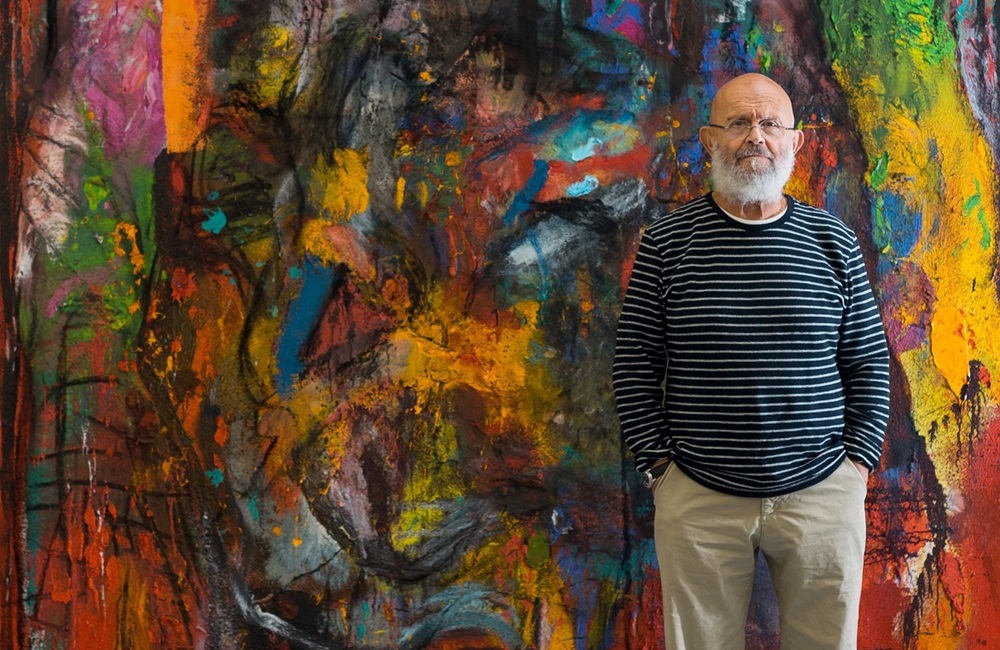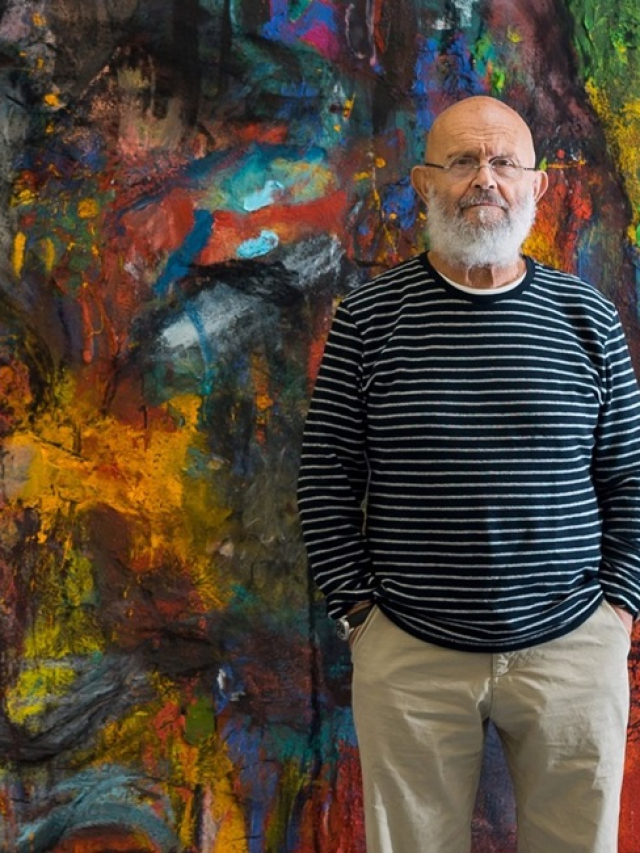Art of Jim Dine
Jim Dine worked within the Pop Art aesthetic and was associated with Neo-Dadaism, Abstract Expressionism. During his career, Dine has explored other media in addition to drawing, including poetry, painting and printmaking. Consequently, he has created a significant virtuoso oeuvre exploring, memory, personal identity and the nature of common place items. His symbols are those that derive from personal history, bathrobes or hearts; obvious choices like tools and gates; and a slew of arboreal emblems.
Dine’s early personal history played a tremendous role in the making of his art, growing up in his family’s hardware store working with many tools as he began to develop as an artist in Cincinnati. This environment led to his interest in everyday objects and objects as standard equipment, which also determined the thematic focus of his later artistic work. After studying painting at the Boston Museum School and the University of Cincinnati, he received a BFA from Ohio University in 1957. In 1958, Dine moved to New York, and there he became absorbed in a group of artists who initiated the Happenings movement; an early type of performance art intended to dissolve the barriers between art and life.
Like a lot of his pop art contemporaries, Jim Dine is an artist whose work is often characterized by the recurrence of notable themes and motifs that held very personal culture-based implications for him. And the tools that Dine so famously incorporates, a nod to his background in the hardware business of his family and a reminder both of the laboring past but also re: consumer society at large. Bathrobe Series (1973) reads like a poignant interrogation of identity; Bathrobes as abstract self-portraits that allowed Dine an intimacy without the necessity of complete literalness. More than that, the recurring heartbeat theme becomes something complex in its own right — a cabinet of emotional and psychological curiosities that reach beyond our straightforward understandings of romance.

While Jim Dine´s work is more than often perceived as a component of the Pop Art movement, it actually distinguishes itself from the works of other pop painters. Dine separated his introspective tactics from his contemporaries’ focus on external consumer culture. Because it suggests his own reflections, Dine can project emotions or persons onto the objects, and so they remain for him as tokens of humanity that stand untouched regardless of their independent histories of usage. Because his work served a mix of personal anecdote and social criticism, Rauchenberg had emerged as a unique voice in the discourse on Pop Art.
Dine mixes painting procedures with the use of found items to build textured shapes and bright colouration. Incorporating found objects with art supplies, Dine creates a tactile surface to all of his works that draws in the viewer by making them want to touch the artwork while seeking clues about their emotional response. Combining with the emotional power of the materials he employs his commitment to expressive colour creates vibrant works. Consequently, they are able to erase the division between painting and object, turning those huge sneaks into paintings themselves — or for others (shoe fetishists) into objects that play on the level of an image as much as materials.
Layers of Self
Over the course of his illustrious career, Dine has had more than 300 solo exhibitions, not least some important retrospectives at renowned institutions like Guggenheim Museum, Walker Art Centre and Whitney Museum of American Art. Some of Dine’s best-known works — think hearts, tools, bathrobes — have become iconic in the world of modern art. He has dabbled with printmaking, sculpture and painting in order to continue evolving the nature of art and its potential forms.
From the 1960s onwards Dine’s practice has evolved markedly. He focused on assembling works in a collage-style desert to the canvas with variety of things from his surroundings and started new discussion about what is considered artwork. Motivated by his increasing passion for the natural world that surrounded him in Vermont, Dine returned to figurative painting in the 1970s and produced a major body of work that included botanical and animal subjects. The elasticity of Dine as an artist shows in this alter and reinforces his long eye with the exterior perviousness that informs his themes – enhancing artistic renditions.

Jim Dine has inspired generations of artists across multiple mediums besides his solo exhibitions. He is now considered a prime figure of contemporary fine art. Instead, his scavenging of everyday items to use as art materials made it possible for subsequent generations to explore related areas. These pieces greatly affect an audience because,a s pointed by Dine, they canbe anything to anybody and they get us thinking about our relationship with the material world as he manages to make so powerful emotional experiences out of such small objects. Furthermore, his ongoing relevance in discussions of art objecthood and autobiographical narrative, point to his significance as an important Pop artist while also acting as a key figure in the evolution of more recent artistic praxis.
The Three Ships
While the monumental bronze sculpture The Three Ships is most evocative of an archaeological dig and represents perhaps the biggest of Dine’s new works. Looks like it was unearthed freshly in 2023. The sculptures, based on abstract armatures formed by a litho ink stain produced in Dine’s Walla Walla studio by his printer granddaughter, consist of large accumulations of formless substance that suggest loose-packed gravel and earth mixed with branches, bits of rope and wood as well as numerous tools such as shovels, pliers, hammers, saws, drills and spades. The sculptures like the tools also look like artefacts that have been excavated. The mass of the plaster and the mud colour patina on the bronze came rather to seem as if it just resurfaced. If The Three Ships has any nostalgia, it’s a visceral one. It is covered in finger-wide gouges, created by Dine’s hands, clawing the plaster while he squatted in the present grabbing at the past.
Jim Dine is preeminent and key figure in modern American art. His facility at melding the very personal with broader cultural insight makes everyday objects revealing emblems of identity and memory. Dine’s influence is long lasting and interesting because of his numerous themes, aesthetic mannerisms, as well as continuous renewing associated with himself which make him the visionary creative force in a world defined through changes within modern artwork. While Dine persists in making art, he will remain vital to the dialogue on contemporary art holding centre stage as a voice that deeply interrogates personal and social histories of art; this makes his output relevant to the broader project of reckoning with modernist-identitarian modes.






